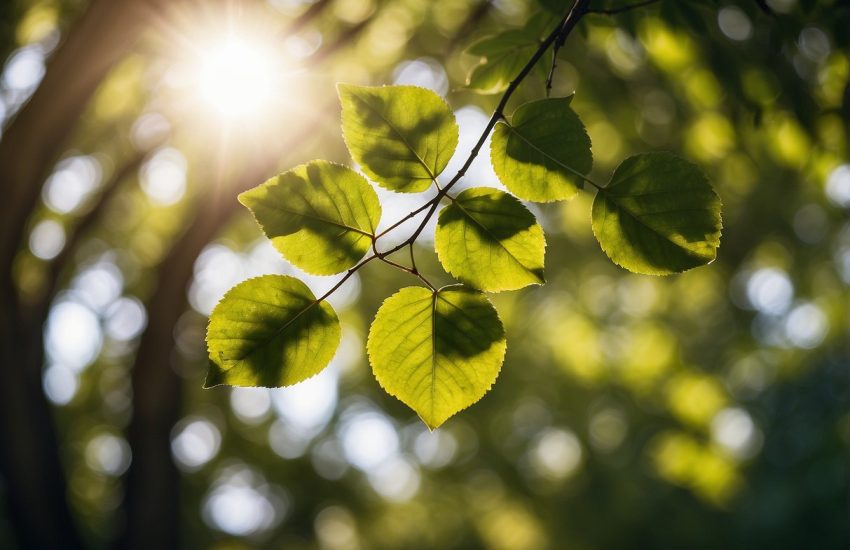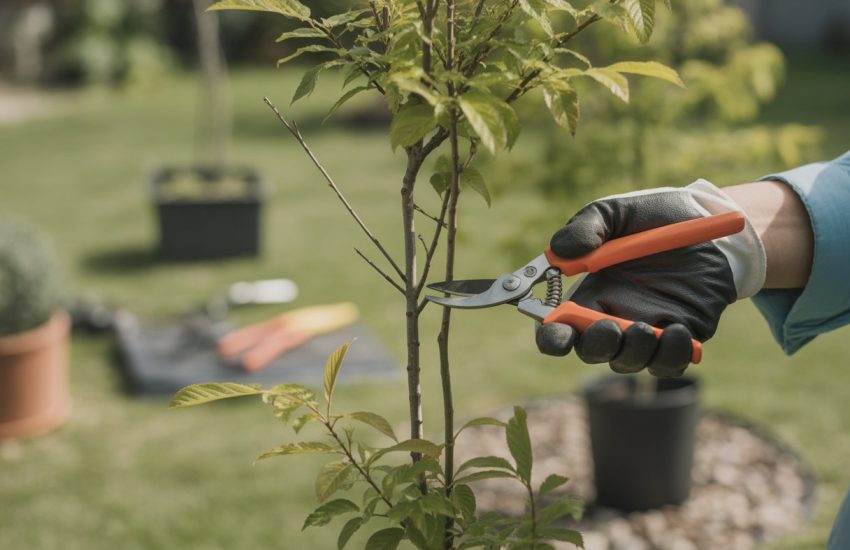The Best 15 Ornamental Trees to Grow in Alabama
There are plenty of ornamental trees that grow well in Alabama. Here are 15 decorative trees that thrive in America’s South. These beauties will enhance your landscape, draw pollinators, and provide shelter for birds and other small animals. This is just a small sample when you consider all the incredible trees that thrive in Alabama’s hardiness zones.
Flowering Dogwood (Cornus Florida)
Flowering Dogwood is a deciduous tree that is native to North America. It’s also one of the most popular flowering trees in Alabama. You’d be hard-pressed to find a neighborhood that doesn’t contain at least one flowering dogwood. Moreover, these lovely trees are readily available at most Alabama nurseries and greenhouses.
The dogwood’s white flowers are some of the first to appear in spring. The four-petaled blooms have a spectacular smell. They typically bloom in late March or early April. They last for two to four weeks. The blossoms can be anywhere from 3 to 6 inches in diameter. They give way to light green leaves and red fruits. The berries are not poisonous. However, their tough flesh and bitter taste make them undesirable to humans. Birds and other small critters do an excellent job cleaning up the tree’s harvest remnants. The dogwood’s foliage turns a spectacular shade of red in fall.
Cornus florida rubra, or pink flowering dogwood, is another type of dogwood that does well in the South. Its blossoms are a heavenly blend of pink and white. They last just as long as that of the Cornus Florida.
Both trees can grow to be 15 to 30 feet in height. However, their canopies are typically even more expansive. Their conical covers start relatively close to the ground. The low-lying branches are often used to support bird and insect houses. These trees prefer well-draining soil and partial shade. They require little to no ongoing maintenance. Therefore, we highly recommend them for newbie gardeners.
Cutleaf Lilac (Syringa laciniata
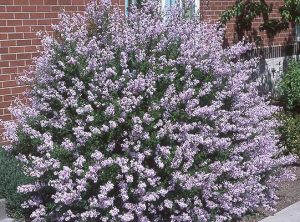
Cutleaf lilac is one of the only lilacs that can tolerate the intense heat of the South. Cutleaf lilac flowers are a soft purple color. They grow in small canonical clusters. They produce a lovely floral aroma that attracts all sorts of butterflies, bees, and other pollinators.
Cutleaf lilac flowers fade quickly. It’s during this time that the tree should be pruned. Regular pruning leads to an increase in flowers in the years that follow. Keep in mind that even though lilac is a tree, it is often treated as a hedge or shrub.
While lilac blossoms fade quickly, they are followed by lovely green foliage. The tree’s leaves are light green and soft to the touch. They make an excellent addition to landscape borders, hedges, and flower beds. A mature cutleaf lilac tree will grow to be around 8 feet tall and 8 feet wide. Lavender lady is another lilac variety that does well in Alabama. Many lilacs do better in frostier growing zones, as they prefer to go into dormancy throughout the winter.
This flowering tree does well when it is propagated in direct sunlight and well-draining soil. It prefers humus-rich, alkaline soil.
Jacaranda (Jacaranda mimosifolia)
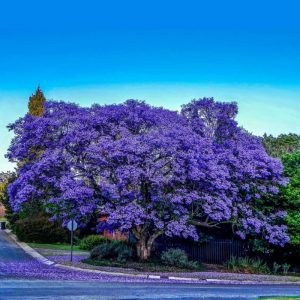
The Jacaranda tree is an impressive ornamental variety that is native to South America. This sun-loving flowering tree is a good match for southern Alabama’s mild weather. Jacaranda is capable of producing a widespread canopy of deep purple and blue flowers. The trumpet-shaped blooms grow in large panicles. They appear to drip from the ends of the tree’s low-lying branches.
Most jacaranda trees bloom twice per year, once in spring and once in fall. The flowers are a welcome sight and even bring along a pleasant smell. However, it can be difficult to appreciate them as they begin to accumulate on the ground. The tree’s foliage is equally fascinating. Its fern-like, bi-pinnate leaves are plentiful in summer. This incredible plant also produces pod-shaped, brown fruits in late summer.
Jacaranda trees typically do well in Alabama’s warmer regions. These tropical trees need lots of sunlight, water, and warmth. These trees can grow to be anywhere from 25 to 40 feet tall and produce 40-foot or wider canopies.
Cornelian Cherry (Cornus mas)
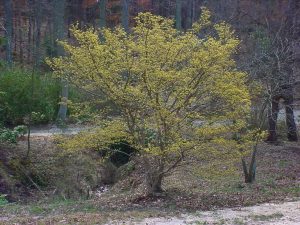
Cornelian cherry comes to the South from southern Europe and western Asia. It’s a gorgeous deciduous tree with the capability of reaching 25 feet at maturity. It produces an abundance of bright yellow flowers in spring and summer. The blossoms are accompanied by green foliage and, eventually, red cherries. The tart fruits can be eaten directly off the tree or mixed into preserves and other foods.
Tonto Crape Myrtle (Lagerstroemia ‘Tonto’)
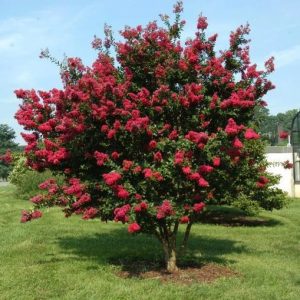
These tiny trees produce a splendid array of long-lasting flowers. The fuchsia pink blossoms last all summer. A typical crape myrtle blooms for a whopping 75 days. The paper-like blossoms grow in clusters surrounded by the tree’s deep green foliage. The tree’s red berries are safe for consumption. However, most gardeners let the berries drop so that native birds and other small creatures can enjoy them.
Mature tonto crape myrtle trees typically only grow to be around 10 feet in height. These vibrant trees are often propagated in rows. Their canopies will grow together to create a dense shade-giving cover. Singular trees can also be pruned. This way, they appear bare along the bottom with saucer-like canopies. Standalone plantings are typically accompanied by ground cover or mulch.
Japanese Snowbell (Styrax japonicus)
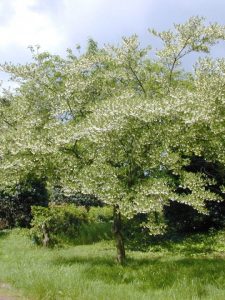
The Japanese Snowbell is a deciduous tree that originates from Japan and China. This ornamental varietal produces an abundance of bell-shaped flowers. The white blooms drip down from the plant’s sideways-growing branches. The tree’s large, oval-shaped leaves grow densely around the tree’s round canopy. The pendulous flowers typically appear in late spring or early summer. They gather together to create a lovely cone-shaped canopy. The fragrant blooms attract all sorts of pollinators and birds.
Japanese snowball typically grows to be 30 feet tall and 30 feet wide. These plants can be left to grow multiple trunks. Most landscapers prune them so that they have just one trunk each. It takes a long time for this species to grow. It may take a young tree several years to produce flowers.
Saucer Magnolia (Magnolia × soulangeana)
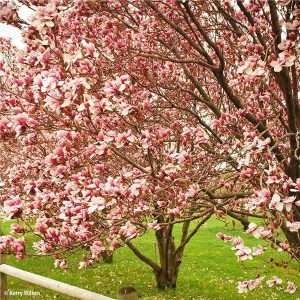
Saucer magnolia is a flowering deciduous tree that thrives in the South’s balmy climate. This incredible varietal is a cross between the Yulan magnolia and Magnolia liliiflora. Its flowers appear in early spring and typically last for one to two weeks. The pink and white buds are incredibly fragrant. The plant’s outstretched petals give it an appearance similar to that of a small plate.
The tree’s brownish-green leaves appear before the flowers fade away. This tree is revered for its gorgeous blooms, sweet fragrance, and captivating shade. Magnolia is one of the South’s staple ornamental trees. In our humble opinion, the saucer magnolia happens to be one of the more spectacular varieties.
Other mainstays of the South are the Southern magnolia, the sweetbay magnolia, and the cucumbertree. You should have no problem finding a magnolia that thrives in your yard, regardless of the conditions.
Saucer magnolia trees typically grow to be 20 to 25 feet tall and 20 to 25 feet wide. They thrive in partial shade and moist soil. Keep in mind that they are slow growers. It takes most young trees two to five years to produce flowers.
Shadbush (Amelanchier arborea)
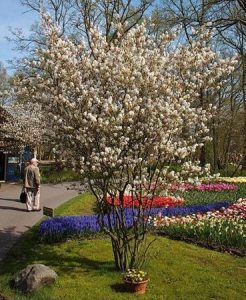
Shadbush, or Alabama serviceberry, is a small deciduous tree that is native to eastern North America. This particular species is usually between 15 to 25 feet tall at maturity. This incredible plant produces a canopy of small white flowers around Easter. The clustered blooms precede the plant’s oval leaves. The tree also produces apple-like fruits in summer. The fruits turn dark red or purple before falling to the ground. The leaves turn a particularly charming shade of orange during autumn.
Serviceberry trees can grow to be 25 feet tall and 15 feet wide. Between their downy flowers, textured leaves, decorative bark, and unique fruits, they serve as year-round landscape decorations. While this tree’s flowers typically only last for one week, its blooming period is rather spectacular. The plant’s purple berries are popular with native wildlife, including most songbirds and pollinators.
Big Leaf Magnolia (Magnolia macrophylla)
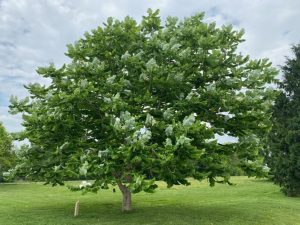
Big leaf magnolia is a deciduous tree that originates from the southeastern United States and Mexico. While this incredible species produces lovely flowers, it’s best known for its incredibly large foliage. This magnolia’s oblong leaves can grow to be anywhere from 12 to 32 inches in length. They produce a rounded canopy that’s highly regarded for its shade-giving properties. The bigleaf’s flowers are equally impressive, with many of the white measuring up to 10 inches in diameter. The plant’s cone-shaped fruits are red and woody. Each pod typically contains multiple seeds. The pods can be saved and dried for future propagation.
Bigleaf magnolias tend to draw a lot of attention. If you’re looking for a truly eye-catching ornamental, you’ll want to add this spectacular ornamental to your list.
Tulip Tree (Liriodendron tulipifera)
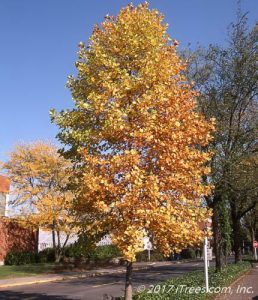
The tulip tree is another ornamental species with spectacular foliage. It comes as no surprise that Liriodendrfera is a member of the magnolia family. The plant’s bright green leaves closely resemble tulip flowers. They’re accompanied by tulip-shaped green and yellow flowers. Since the blossoms only appear high in the tree’s canopy, they are often overshadowed by the tree’s unique foliage. The leaves turn a pleasant shade of canary yellow in autumn.
This stunning tree can grow to be 90 feet tall and 40 feet wide at maturity. It’s capable of growing in zones 4 through 9. However, it prefers the balmy climate of the American South.
Downy Serviceberry (Amelanchier arborea)
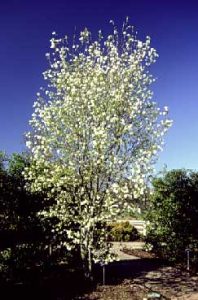
Downy serviceberry is another ornamental tree that can serve as a landscaping focal point during all four seasons. This incredible plant produces white flowers in spring and small red berries in autumn. The flowers boast five petals. They typically appear between March and April. The fragrant blooms attract all sorts of native pollinators. The plant’s berry-lime pomes are a preferred snack of songbirds and other wildlife.
Downy serviceberry can grow to be 25 feet tall and 25 feet wide at maturity. Its droopy flower clusters and color-changing leaves are usually welcome additions to any Alabama garden.
River Birch (Betula nigra)
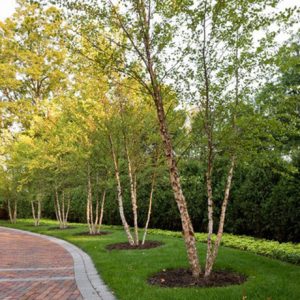
River Birch is a native tree that’s revered for its unique bark and shade-giving canopy. This unique species tends to shed stretches of its white and tan bark during winter. This makes the tree’s trunk appear as though it is covered in peeling paper. The tree produces small green catkins in springtime. Its tree’s leaves are diamond-shaped, ribbed, and green.
River birch is an excellent tree for individuals who aren’t looking for flowering varietals. They are excellent additions to shaded landscape borders and open spaces.
Yoshino Cherry (Prunus x yedoensis)
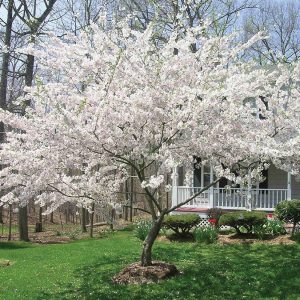
Cherry blossom trees produce an abundance of sweet-smelling flowers. While these flowering trees are not native to the United States, they thrive in America’s South. This plant’s blossom-heavy canopies are highly regarded in the landscaping world. The fragrant blossoms appear in early spring and last for anywhere from two to three weeks. The flowers precede the tree’s impressive foliage. The tree’s leaves are glossy, green, and serrated. They serve as excellent additions to yards and walkways.
Yoshino cherry trees can grow to be anywhere from 40 to 50 feet tall.
Japanese Crepe Myrtle (Lagerstroemia fauriei)

Japanese Crepe Myrtle is an ornamental shrub or tree that comes from Yakushima Island, Japan. This vibrant plant was introduced to America by way o South Carolina. They are an excellent match for the South’s mild climate. The tree’s showy flower display typically appears in late May or early June in Alabama and other southern states. The blossoms last for anywhere from three to four months. The stark white flowers contrast the tree’s orangy bark. The blossoms are small and paper-like. Oval-shaped, green leaves compliment the delicate flowers. The leaves are smooth, durable, and small. The foliage typically turns yellow or orange in autumn.
Crape myrtle trees can grow to be anywhere from 35 to 50 feet in height. These trees are incredibly adaptive and tend to grow fast. This showy species makes an excellent shade tree.
American Elderberry (Sambucus canadensis)
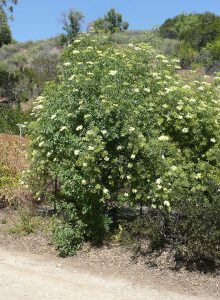
American elderberry, or black elderberry, is a multi-trunked deciduous plant that grows throughout the eastern United States. This tree can even be found in the wild of Alabama. This shrub-like plant blooms in late spring. Its large clusters of white flowers closely resemble lace. They sit atop a backdrop of bright green leaves. The foliage grows from slender stalks. Grape-like clusters of purplish-black berries complicate the greenery. The berries are highly regarded for their medicinal and healing properties.
These enticing plants can grow to be anywhere from 6 to 12 feet in height. Each plant can have anywhere from five to 10 individual trunks. It takes roughly two years for a young plant to produce fruit.
There’s no shortage of show-stopping ornamentals that grow well in Alabama. Whether you’re looking for all-star foliage, stunning blooms, or eye-catching bark, we’ve got you covered! Let us know your favorite ornamental trees in the comment section below.

